Double Feature
The Double Feature is a platform for very different tendencies and forms of expression in artistic film production
YALDA AFSAH
In her video works, Yalda Afsah explores the complex relationship between humans and animals. At the SCHIRN, she presents the film SSRC (short for: "Secret Society Roller Club", 2022, 20 min.), which is dedicated to the special social environment of the Roller Pigeon Clubs in South Los Angeles, where pigeons are bred, trained and domesticated for sporting purposes because of their mysterious backward rolls in flight. In her video works, Afsah reveals the ambivalence of interspecific relationships between care and control, physical strength and broken will, instinct and manipulation. SSRC focuses in particular on the blurred boundary between care, affection and identification with animals on the one hand, and discipline, submission and human dominance on the other, and attempts to question and dissolve these dichotomies
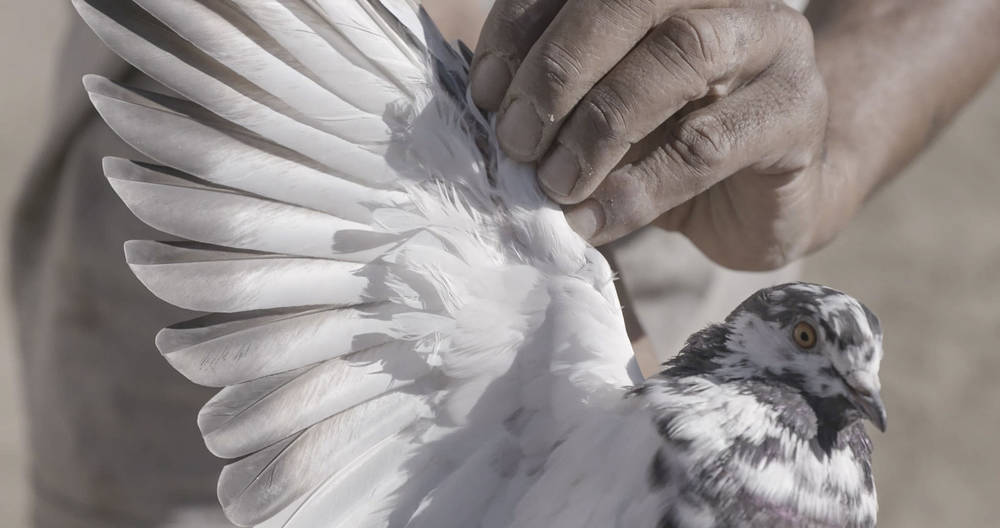
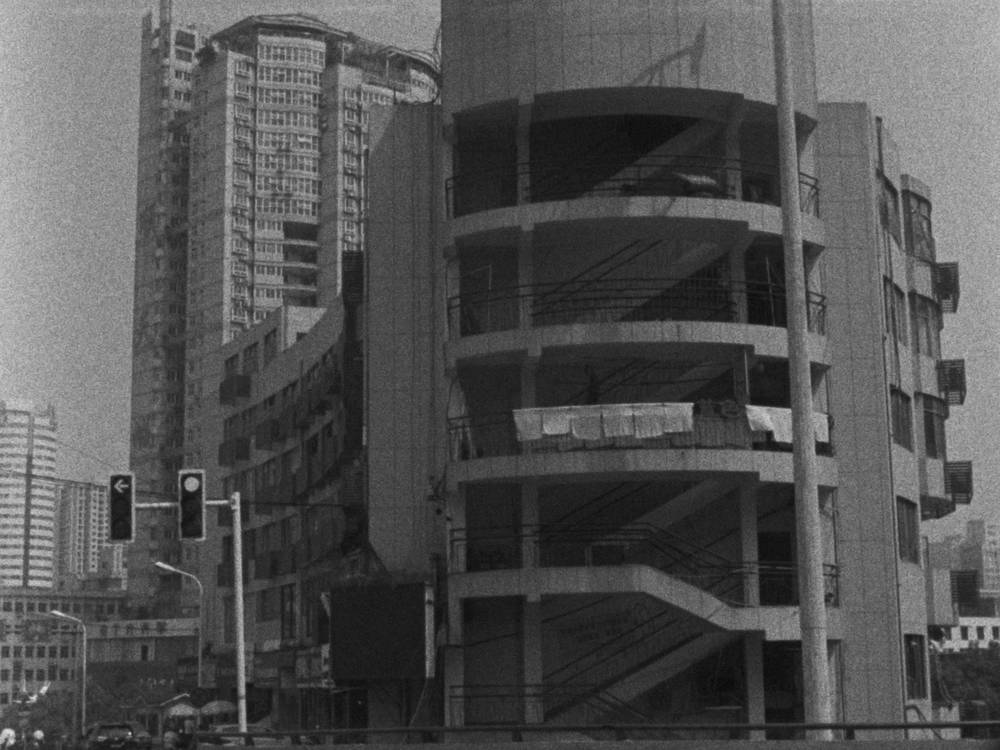
Anja Kirschner
Based on extensive research into the technological and aesthetic potential of immersive media, Anja Kirschner's work deals, among other things, with the motif of catastrophic destruction in post-apocalyptic computer game worlds. At the SCHIRN, the artist presents the film UNICA (2022, 35 min.), in which the traces of a latent catastrophe are uncovered in historical, simulated and inner worlds. UNICA is named after the writer and artist Unica Zürn (1916-1970), whose illustrated text Das Haus der Krankheiten (1958) depicts her body and its institutionalization as a formation. In anagrams and fantastic representations of the body, Zürn provoked a break with the normative anatomical, architectural and linguistic structures to which she saw herself exposed. Kirschner transfers Zürn's generative approach to digital forms of production and historical locations and combines them into a profoundly topical and site-specific exploration
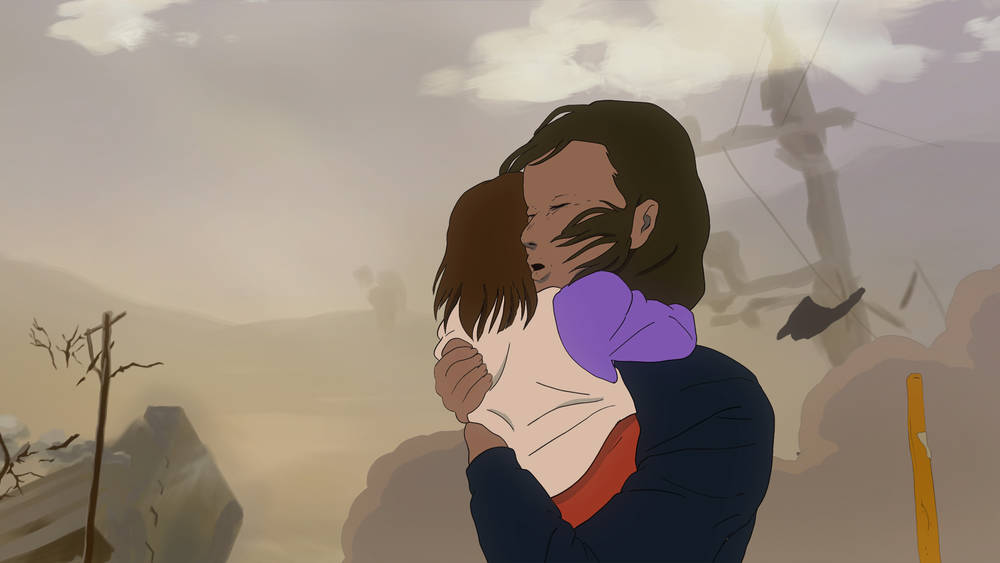
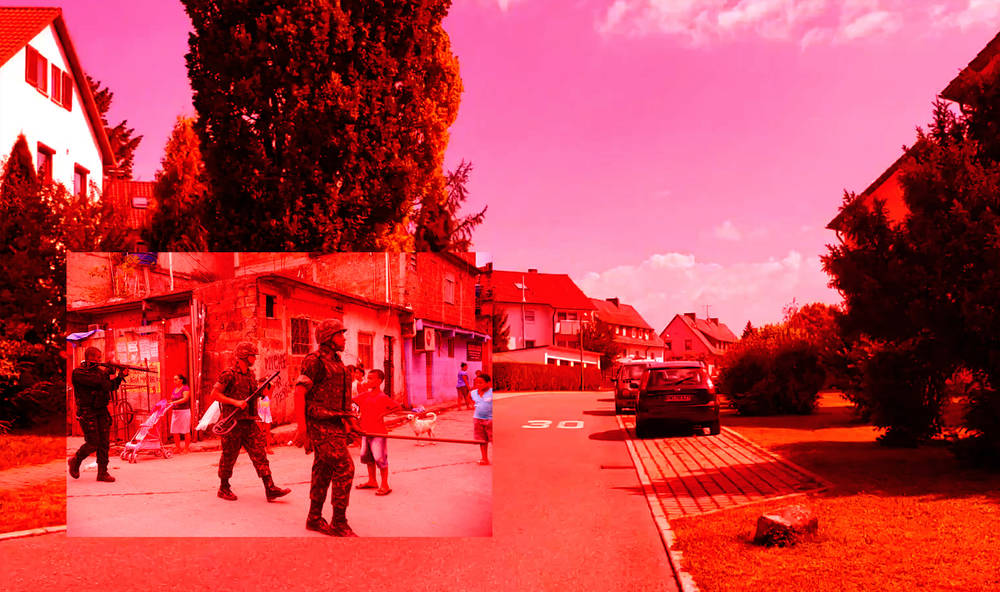
Igor Vidor
In his works, Igor Vidor examines mechanisms and symbols of political power and systemic oppression. In his installations and videos, he comments on the deeply rooted violence and social injustice in the everyday lives of people in Latin America. These conditions seem to be repeated by politics in Brazil and are discharged in the perfidious police practices of paramilitary groups. In his video work "A PRAGA" (The Plague, 2020), Vidor denounces Germany and other countries of the global North for being partly responsible for the spread of violence and racism in Brazil through the production of weapons and their lucrative trade. In the film, he combines footage of police operations in Brazil with documentary footage in the small town of Oberndorf am Neckar in Baden-Württemberg and examines the connection between the local arms industry and the export of weapons to the Latin American continent, which has been going on for a hundred years.

EVA GIOLO
Born in Brussels in 1991, Eva Giolo works with the media of film, video and installation. She places a particular emphasis on the female experience, using experimental and documentary strategies to explore themes such as intimacy, permanence and memory, as well as analyzing language and semiotics. Giolo uses her camera to capture the "banal" moments of everyday life and reveal their hidden depth. She is co-founder and artistic director of Elephy, a production site for film and media art in Brussels. At the Double Feature at the Schirn, Giolo will be showing her video work A Tongue Called Mother (2019, 18 min.). In a calm cinematic montage, images of schoolchildren reading are combined with everyday scenes of women from three generations of a family. The result is a web of interrelationships between language, gestures and belonging
AZIZ HAZARA
Artist Aziz Hazara, born in Afghanistan in 1992, works with various media such as video installation, photography, sound and sculpture. In his works, he deals with questions of memory, identity and conflict. Hazara examines the traces of the Soviet and US occupation of Afghanistan in the context of power relations, geopolitics and surveillance. In the Double Feature at the Schirn, he will be showing his latest video work Takbir (2022, 9:57 min.): In the 1980s, the inhabitants of Kabul used the darkness of the night to protest against the ongoing Soviet occupation. After the end of the US-led NATO invasion in 2021, they once again took to their rooftops and shouted the takbir, the call "Allah-u akbar", in the darkness as an acoustic act of defiance, as a collective reclaiming of space. With Takbir, Hazara spans Afghanistan's recent history, from its independence to the ongoing violence caused by religious fundamentalism. Shot in Kabul after the Taliban took power, the video work explores the idea that darkness can also offer a refuge.
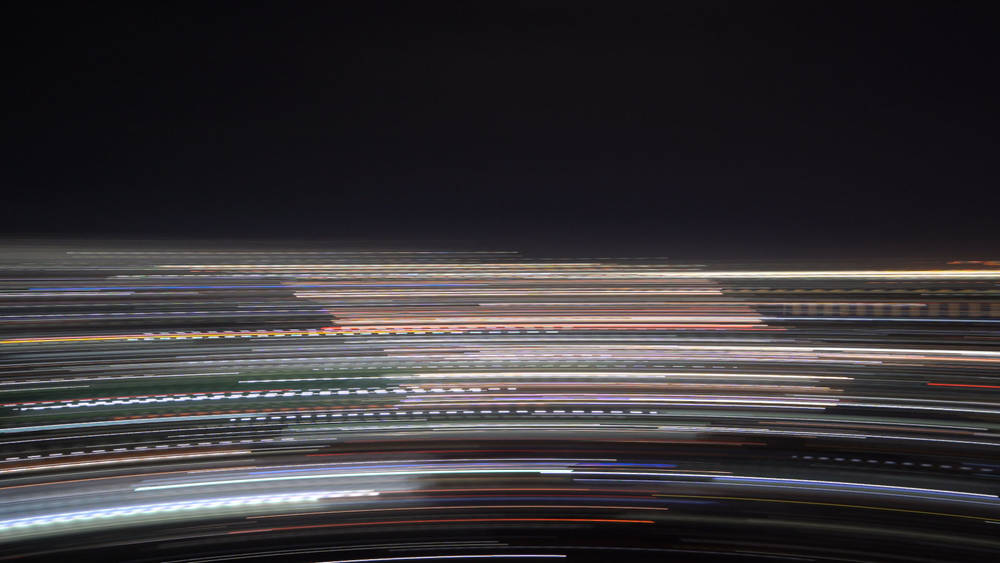

PHILIPP GUFLER
In his multimedia works, Philipp Gufler questions the power structures of heteronormativity. The artist repeatedly draws on self-organized archives and places personalities from the recent past at the center of his work. He often slips into the role of these people himself, thereby creating a new narrative. In the double feature, Gufler presents his video work "Lana Kaiser" (2020, 13 min.). It is dedicated to the media star of the 00s who became popular as Daniel Küblböck. Lana Kaiser, Küblböck's self-chosen name, was an essential figure of identification for her fans as a queer person. Lana Kaiser disappeared on a boat trip to North America in 2018. Philipp Gufler's short film can be understood as a tribute, but at the same time opens up a complex discourse on the controversial way the German media landscape deals with the representation of queerness as "Otherness"

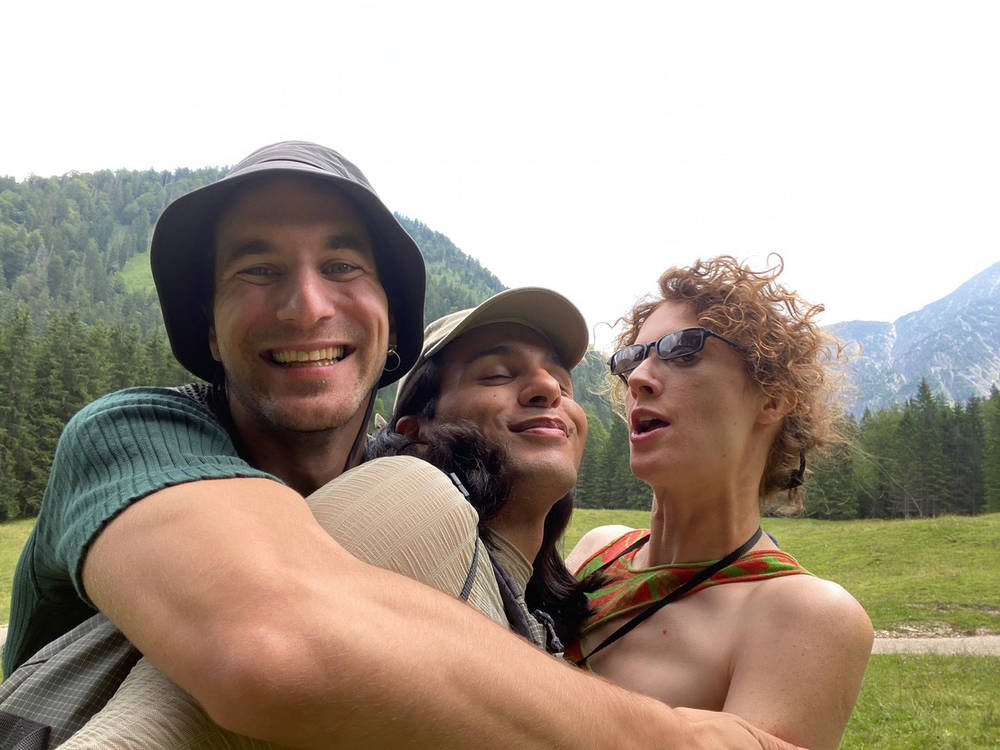
Jovana Reisinger
In her works, author, director and artist Jovana Reisinger highlights entrenched behaviors, market-driven decisions and identifications that are formed through stereotypes. With her specific film language, the artist takes a critical and humorous look at consumption, gender roles and beauty standards in a meritocracy. At the SCHIRN, Reisinger will be presenting her latest film "Unterwegs im Namen der Kaiserin. Prequel" (2022, 17 min.), in which she sends three hip young people into the mountains. Romy, Karlheinz and Magda-Gustav, named after actresses and actors from the famous Sissi trilogy, set off in search of the legendary fountain of youth, in which Empress Sissi and King Ludwig II are said to have bathed, under the motto "Forever young - no matter how!". Reisinger's video work not only demonstrates the clichés associated with the Heimatfilm, but is also dedicated to the attitude to life of a generation caught between the youth craze, chic outdoor clothing and Instagram


JAMES GREGORY ATKINSON
With his multimedia works, James Gregory Atkinson responds to the extreme incompleteness of official archives in relation to Black people, their narratives and cultures. To this end, he draws on the history of queer and Black people and brings it into a dialog with current conditions. At the SCHIRN, the artist is showing two video works that relate to Detroit. The setting of "The Day I Stopped Kissing my Father" (2019, 3:54min.) is the Detroit Public Library and its large hall, whose murals depict American history to the exclusion of Black people. Atkinson has a young black rooster running through the hall as a symbol of sexuality, desire and fear. His youthfulness alludes to insights into normative notions of masculinity and patriarchy. With the ongoing project "Detroit Archive" (2019-today), Atkinson explores the idea of the body as an archive. Members of the Detroit ballroom scene provide him with videos that he uses to build an archive for the community. Their performances are a form of non-verbal communication and gestural self-expression, the visibility of which is documented by the collection.
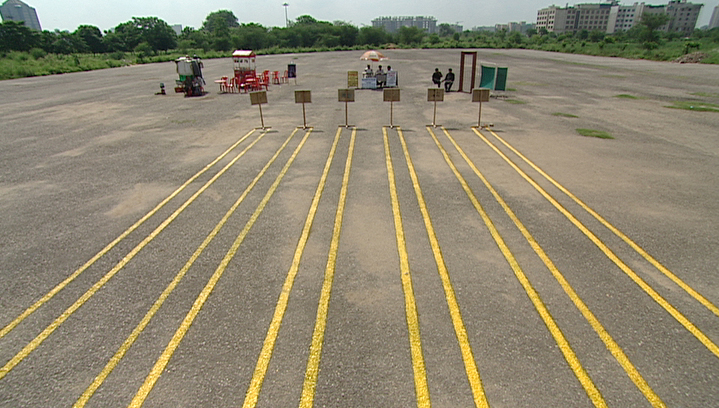
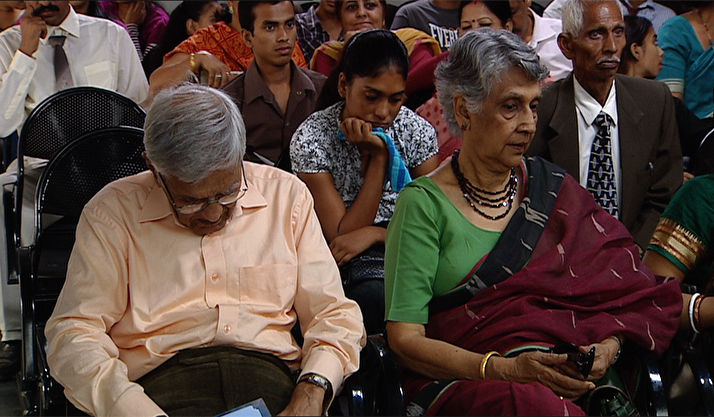
BANI ABIDI
Bani Abidi is known for her unmistakable film aesthetic, which is characterized by subtle humour and the dark absurdities of everyday life. Her film "The Distance from Here" (2009) is about applying for a travel permit, the bureaucratic procedure and the nervous wait for the visa. Abidi stages an anonymous crowd of people like an absurd theater in an undefined location. Seemingly just following a formality, the wait takes on an existential dimension for the individual that determines the course of their life.